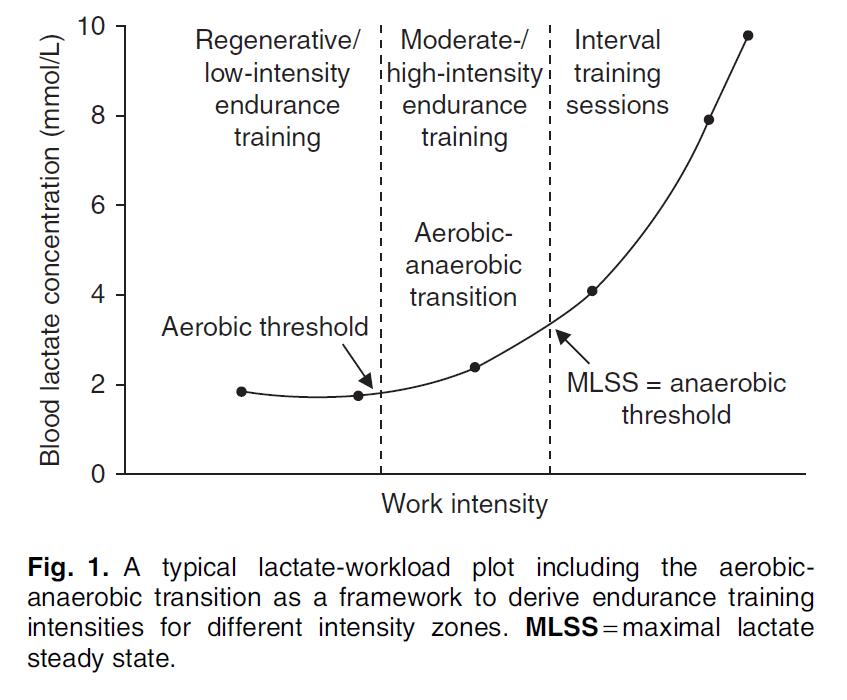In order to improve your performance and reduce the risk of injury in cycling athletes should look...
Cycling Performance Insights: Anaerobic (‘Lactate’) Threshold
Lactate threshold is a common phrase in the cycling community but has been a topic of some debate over the years. Traditionally, lactate threshold was recognised as the point on the lactate curve (generated during an incrementally increasing exercise test) where blood lactate concentrations rise above baseline. The thought was that this increase is lactate (or more commonly, "lactic acid") was due to a lack of oxygen delivery to the working muscles. Further build-up of lactate then coincided with fatigue and, subsequent, exhaustion. This led to the assumption that "lactic acid" build-up is what causes exhaustion during maximal exercise. This theory has since been disproven with lactate being somewhat redeemed.
Lactate is a product of a process called glycolysis which is the oxidation of glucose (sugar) in the mitochondria of cells. Glycolysis is vital for energy production but also produces acid (H+ or hydrogen ions) as a byproduct. One of the functions of lactate is to shuttle the hydrogen ions out of the mitochondria into the blood, where it can be transported elsewhere. This function is vital for balancing pH in the muscles where the working enzymes are sensitive to changes in acidity. Apart from the pH balancing function of lactate, it is also gets used as a fuel source in other resting/working muscles or by the liver to make more glucose. So what happens during exercise?
During exercise, the working muscles require more energy to produce the necessary power output. As intensity increases, so too do the energy demands. Increased energy demands increase the rate of glycolysis. This then means an increase in H+ ions and subsequently lactate to balance the increased acidity. This leads to a rise in blood lactate levels above resting (lactate threshold or LT1). After LT1, there is a steady increase in blood lactate as intensity increases. Here the body's ability to clear lactate is able to keep up with the increased production due to high rates of glycolysis. As intensity further increases, there is a point where the body can't clear lactate fast enough to cope with the increased production and there is a rapid increase in blood lactate. This point is known as LT2 or maximal lactate steady-state (MLSS). Beyond this point, more energy will be supplied through anaerobic metabolism - which will likely result in exhaustion.
The lactate curve can be used to identify intensity domains that are separated by two thresholds: lactate threshold and MLSS. Lactate threshold, therefore reflects the shift from moderate to heavy intensity whereas MLSS reflects the shift from heavy to severe intensity (along with critical power and FTP).

Graph taken from Faude et al. 2009.
Both LT and MLSS have been strongly correlated with cycling performance both in the lab and in competition1. MLSS is also suggested to be a good reflection of endurance capacity as defined as the highest workload that can be sustained for a prolonged period of time.
Understanding your lactate curve can help guide training to stress particular metabolic systems. Training at or near LT1 (or the point where lactate increases above baseline but exercise is still sustainable) challenges the the body's ability to clear and deal with lactate. Challenging this system drives adaptation. Improving your ability to deal with lactate shifts your lactate curve to the right - meaning for each given workload there is less lactate accumulation. This reflects an improved endurance capacity.
Laboratory tests can be used to produce your lactate curve. The protocol typically involves stages where the power output for each stage increases. Toward the end of each stage, blood lactate concentration is measured using a finger or earlobe prick. Blood lactate concentration is then plotted over power output to produce a lactate curve. This is then used to determine training intensities that will target the necessary metabolic systems.
**Maybe add a link to S2S to book a lactate curve test?**
References:
- Faude O, Kindermann W, Meyer T. Lactate threshold concepts: how valid are they? Sports Med. 2009;39(6):469–90.
- The anaerobic or lactate threshold was long recognised as the point during exercise of increasing intensity, at which blood lactate concentrations increase above steady-state levels due to a lack of oxygen delivery to working muscles, and this coincided with fatigue and termination of exercise.
- However, it is now acknowledged that the increase in lactate is not due to a shortage of oxygen.
- Lactate is produced continuously under aerobic conditions, and increases as work rate (intensity) increases due to increased rates of glycolytic metabolism
- Lactate is ‘shuttled’ as an important substrate for utilisation by multiple organs including oxidative metabolism by other working or resting muscles, the heart as well as conversion to glucose in the liver (‘ gluconeogenesis’)
- Lactate concentration increases at an intensity where lactate production exceeds the rate of lactate clearance and represents a marker of physical strain or stress
- Lactate ‘threshold’ (LT) can be delayed or ‘improved’ by increasing the body’s capacity to clear lactate at these intensities (appropriate endurance training)
- The LT is used to identify the transition between moderate (no notable increase in lactate) and heavy (increased lactate) exercise intensity domains.
- Notable: exercise is still sustainable above LT as relevant physiological variables (ventilation, blood and muscle PH, muscle fatigue) are still able to stabilise.
- Critical Power or Critical Speed (CP/CS) are ‘thresholds’ at higher intensities than LT that are used to distinguish between heavy (still sustainable) and severe (not sustainable) intensity domains,
- Exercise above CP/CS requires a sustained and obligatory non-oxidative metabolic contribution (driving very high lactate concentrations) and other physiological parameters are unable to stabilise; however, there is still no compelling evidence to support the absence of oxygen above CP/CS.
